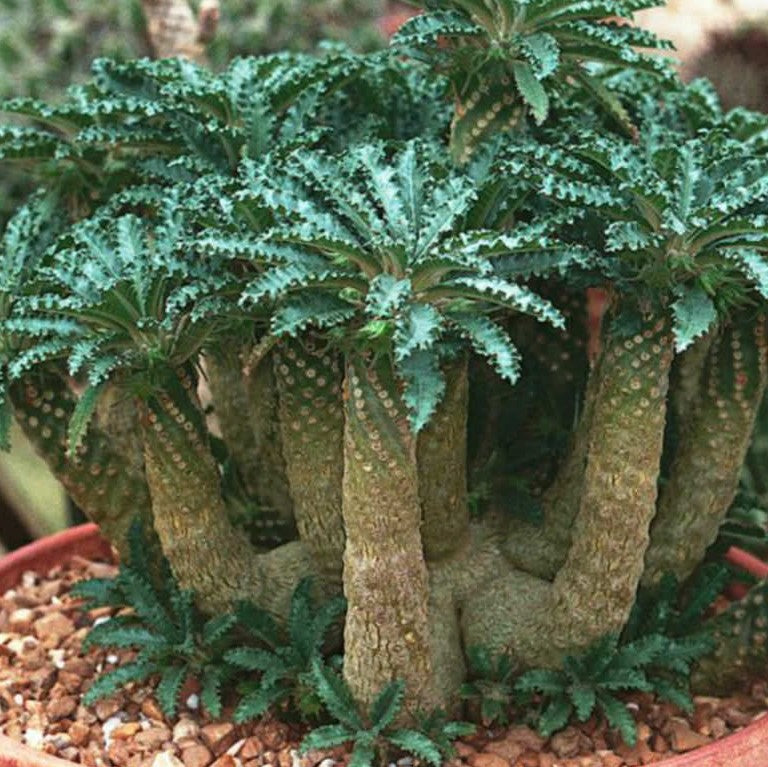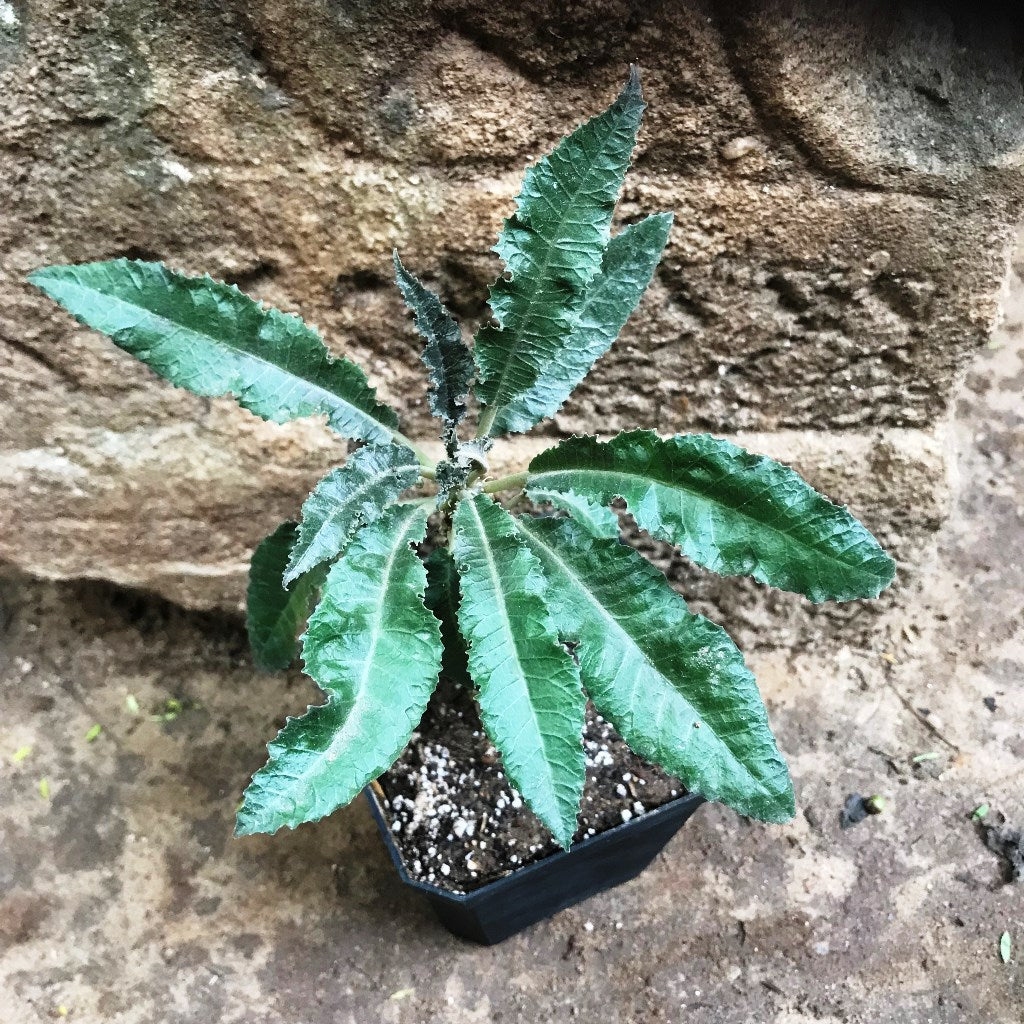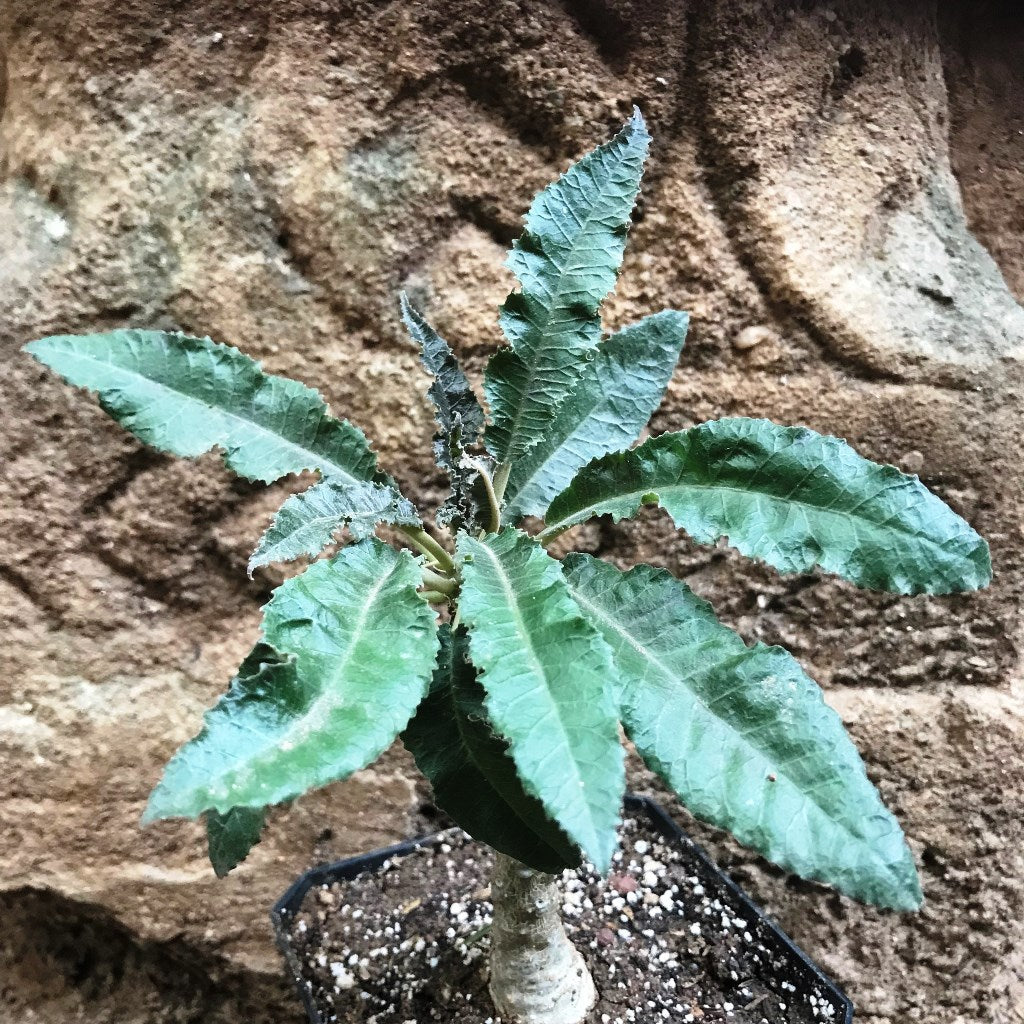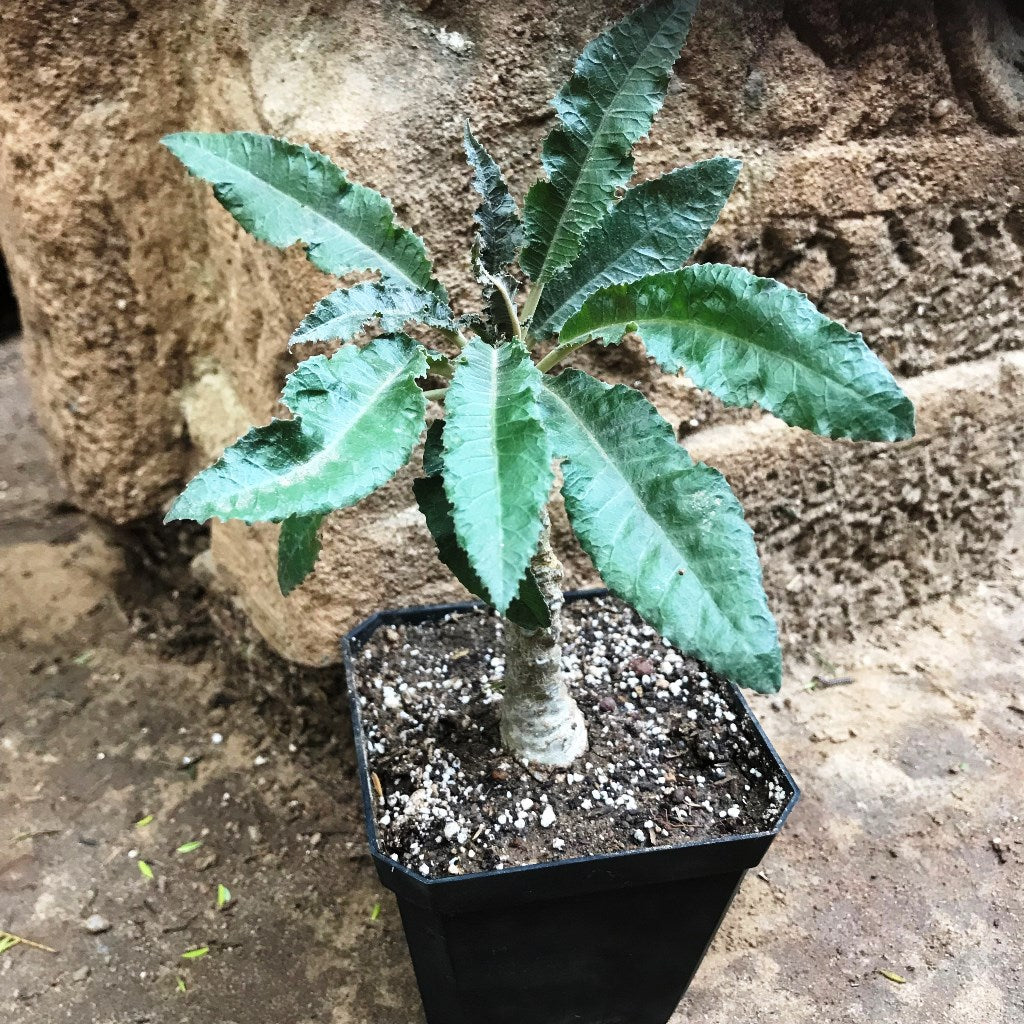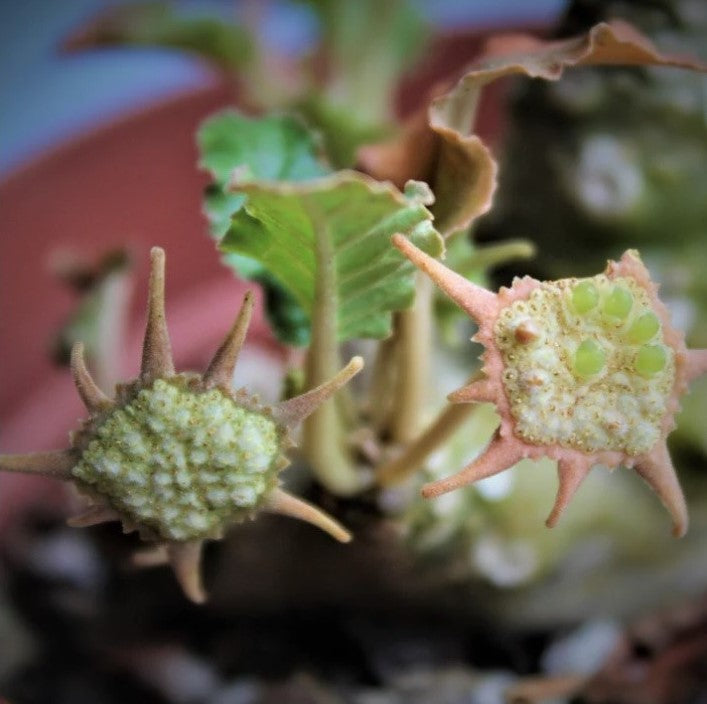Flying saucer plant
Origin
Northeast Africa
Family
Moraceae
Description
Dorstenia crispa a curious fig relative from Somalia. This species produces a caudex and has oblong leaves that flush a burnt orange color in high light or when temperatures drop. It has a thick, dark green- to mahogany-colored conical trunk, that will grow to 15 centimeters in diameter and 30-40 centimeters in height, older parts often with peeling bark. The stem bears conspicuous and prominent round scars of petioles, inflorescences and stipules in a spiral pattern.
Commonly called flying saucer plant due to its unusual disk-shaped flowers called hypanthodiums. Flower-like structures are fruiting bodies called hypanthodiums.
Environment
Dorstenia needs bright light or partial to full shade, with warm temperatures and a well-drained soil mix that must not remain soggy for too long. During the growing season, the plants appreciate a fair amount of water but allow the soil to dry slightly between watering, making sure that they never dry out completely. They have to be kept in a rather high air humidity. They are fertilized once during the growing season with a balanced fertilizer diluted to ½ the strength recommended on the label. During the winter months they tend to go at least partially dormant and will exhibit some leaf loss. During this period, they should be given very little water.
Landscape
Dorstenia crispa is pretty versatile, having various landscape uses. This plant will look absolutely gorgeous in rock gardens, succulent gardens, desert gardens, and containers. It is also a common indoor ornamental as a bonsai.

